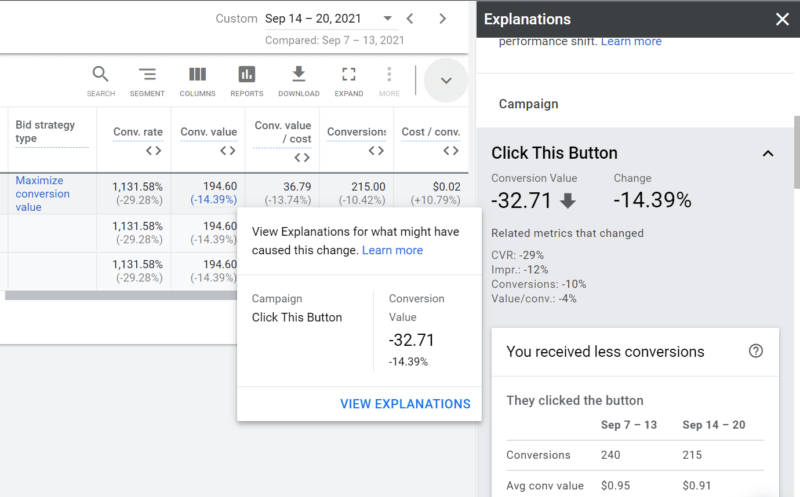Google Ads is introducing conversion goals, which group conversion actions into categories based on conversion type and can be used to optimize bidding at the account or campaign level, the company announced Monday. Alongside conversion goals, the company also announced a troubleshooting tool called Tag Assistant and explanations for Search campaigns.
Conversion goals. There are three types of conversion goals:
- Standard goals — Conversion actions added by the advertiser, which are then automatically grouped into conversion goals based on their conversion category type (e.g., “Purchases,” “Contacts” or “Submit lead forms”).
- Account-default goals — The standard conversion goals (above) that you have designated as your account default. When you create a new campaign, all account-default goals in your account are selected for optimization by default.
- Custom goals — Goals that advertisers can create and add any combination of primary (used for bidding) and secondary conversion (not used for bidding) actions.
“For example, let’s say you’re an online clothing retailer. Going forward, you can set a purchase as your account-default goal so that all of your campaigns can optimize for that outcome,” Google said in the announcement, “Within this purchase goal, you’ll also be able to define which specific conversion actions, such as ‘completed sale’, should be used for bidding.” Advertisers can decide which individual conversion actions are used for bidding optimization when the goal it belongs to is used for bidding.
Advertisers will begin seeing their conversion actions grouped by these new conversion goals when they create new campaigns over the coming weeks. Existing conversion, conversion optimization and bidding settings will not be changed.
Tag assistant. Your conversion actions play an important role in facilitating the aforementioned conversion goals. To that end, Google is also introducing Tag Assistant, a tool that can help you diagnose issues with your conversion actions, such as unverified conversion actions, inactive tags or no recent conversions.

Additionally, the Tag Assistant shows which conversion actions are being properly measured in real time.
Explanations for Search campaigns. Google has also added explanations for Search campaigns. “With explanations, you can view the reason for any change in conversion value in a single click,” the company said.

Explanations are currently available for search campaigns using manual CPC, enhanced CPC, enhanced CPC for value, target CPA, maximize conversions, maximize clicks bidding, maximize conversion value and target ROAS, as well as app campaigns using target CPA.
Why we care. Conversion goals may simplify conversion management and improve campaign performance by giving Google’s machine learning more data to work with.
The Tag Assistant can help advertisers troubleshoot unverified or inactive conversion actions, which can help them more accurately record conversions.
And, explanations may help advertisers learn why account performance has changed, in one place, without having to cross-reference reports. This may also be useful for identifying potential reasons behind those performance changes.
The post Google Ads’ new conversion goals group conversion actions for account and campaign-level bidding optimization appeared first on Search Engine Land.
No comments:
Post a Comment